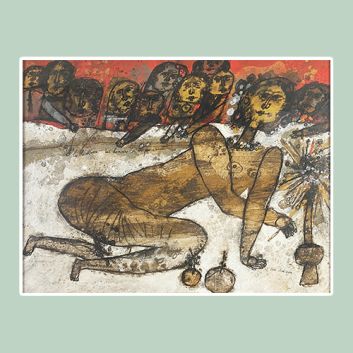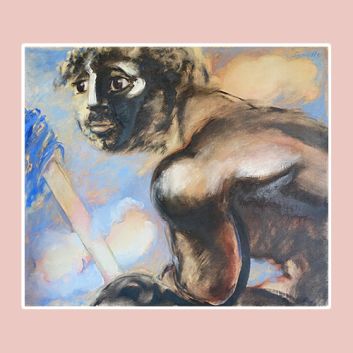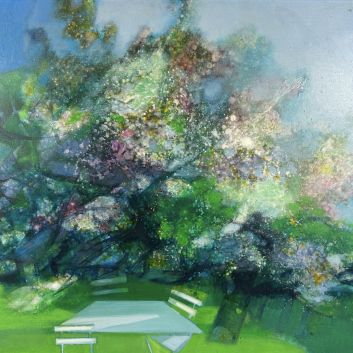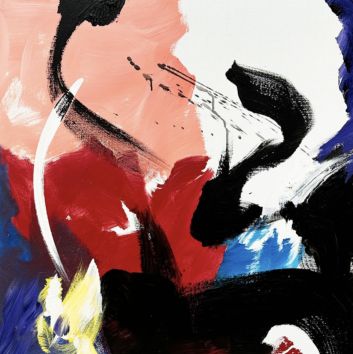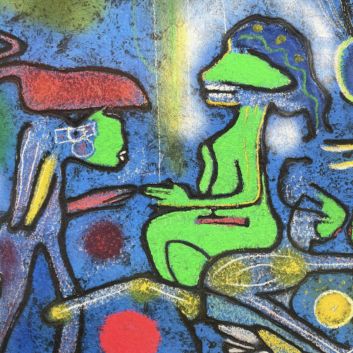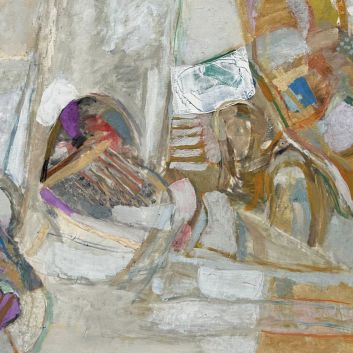Cote et valeur des tableaux, dessins, peintures de Félix Bonnet, dit Tobeen
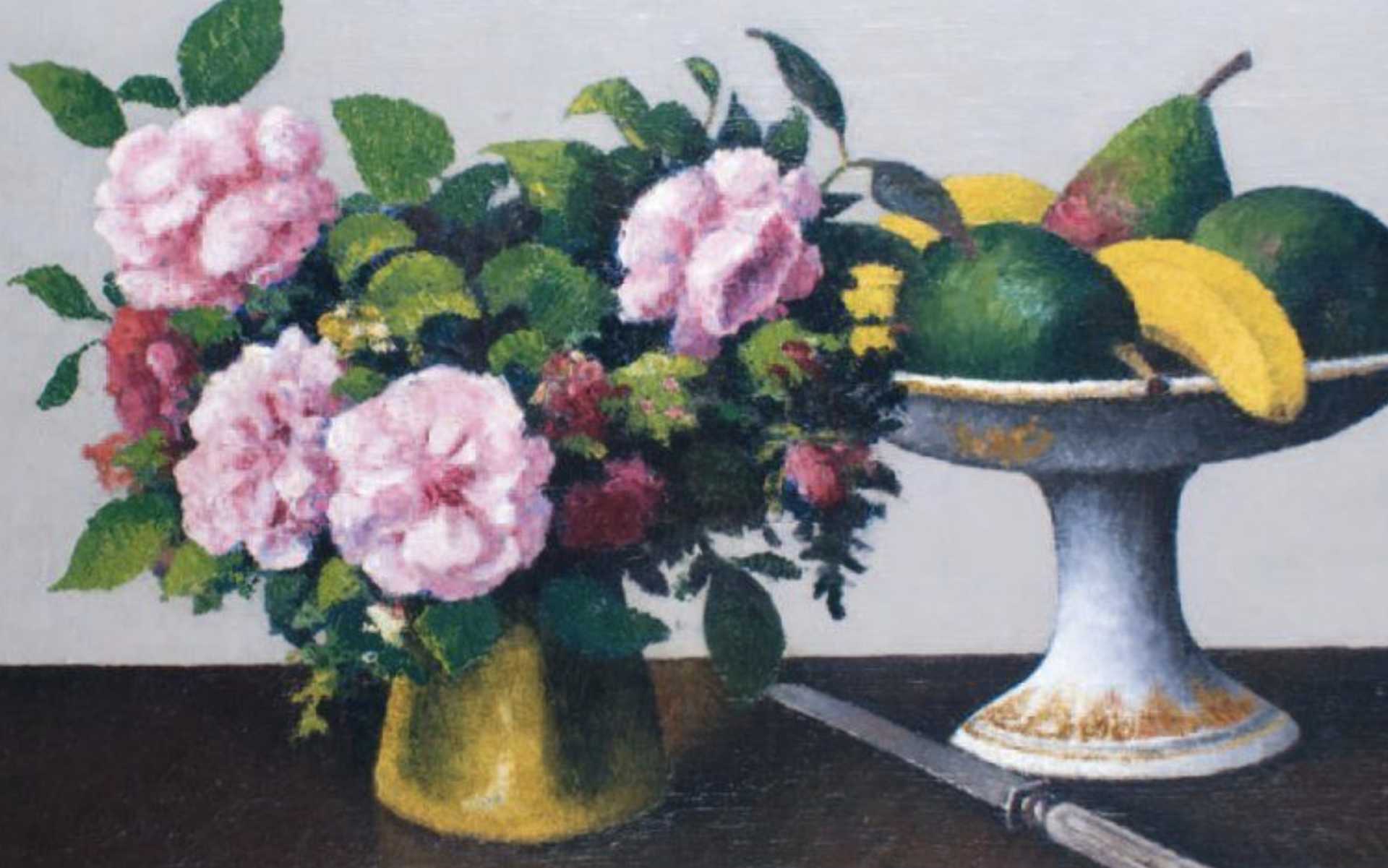
Si vous détenez une œuvre réalisée par l’artiste Tobeen ou d’après son travail et que vous souhaitez connaître sa valeur, nos experts et commissaires-priseurs agréés par l’État vous aiguilleront.
Nos spécialistes réaliseront une expertise gratuite de votre œuvre, et vous transmettront une estimation précise de sa valeur sur le marché actuel.
Par la suite, si vous désirez vendre votre œuvre, nous vous orienterons vers le meilleur dispositif possible pour en obtenir un prix optimal.
Cote et valeur de l’artiste
Peintre important de l’École de Paris, Félix Bonnet, dont le nom d’artiste est Tobeen, bénéficie d'une certaine reconnaissance sur le marché de l’art.
Ses œuvres, imprégnées du cubisme, ont la cote en salle des ventes et sont recherchées par les collectionneurs et le prix auquel elles se vendent sur le marché des enchères s’échelonne entre 20 et 334 000€.
Ainsi, une œuvre signée Tobeen peut atteindre des centaines de milliers d’euros aux enchères, comme le prouve son huile sur toile Pelotaris, datant de 1912 adjugée plus de 360 500 € en 2013, tandis qu’elle était estimée entre 400 700 et 52 300€.
Ordre de valeur allant du plus basique au plus prestigieux
Technique utilisée | Résultat |
|---|---|
Estampe - multiple | De 150 à 2 900 € |
Dessin - aquarelle | De 160 à 4 500 € |
Peinture | De 160 à 360 500 € |
Réponse en - de 24h
La vie de Tobeen
Né en 1880 à Bordeaux sous le nom de Félix Bonnet, Tobeen est un artiste dont le parcours épouse les courants majeurs de l'art du début du XXe siècle, tout en conservant une singularité rare.
Issu d'une famille modeste, il découvre très jeune la gravure et le dessin, ce qui le conduira à s'installer à Paris au tournant du siècle, à la recherche d'une carrière artistique.
Tobeen évolue rapidement dans l'effervescence parisienne, où il se lie avec les avant-gardes de l'époque, tout particulièrement avec les cubistes qu'il côtoie au Bateau-Lavoir.
Influencé par la rigueur géométrique du cubisme, il développe cependant une sensibilité picturale qui le distingue de ses contemporains. Tandis que Braque et Picasso s'attachaient à déconstruire la forme pour en révéler l'essence, Tobeen se montre plus lyrique dans son approche.
Il participe à l’exposition du Salon d’or avec les frères Duchamp, et notamment le cubiste Jacques Villon.
Ses compositions, souvent marquées par des paysages du Pays basque, regorgent de douceur et d’harmonie, où la couleur semble respirer librement, dialoguant avec les formes. Le cubisme de Tobeen n'est pas sec, ni purement analytique, mais il invite plutôt à une contemplation sereine du monde, presque poétique.
L’artiste ne se limite pas à la peinture. Il excelle également dans l’art de la gravure, et son engagement dans la modernité le conduit à expérimenter plusieurs techniques artistiques, tout en restant fidèle à son amour des motifs naturels et traditionnels.
Enraciné dans sa terre natale, il continue à puiser dans les paysages basques, leurs reliefs, leurs lumières changeantes, nourrissant son œuvre d'une profondeur narrative rarement égalée dans le cubisme.
Tobeen, bien que discret sur la scène artistique internationale, laisse derrière lui une œuvre riche et personnelle. Sa vision singulière, subtilement mêlée aux grandes tendances de son temps, confère à son art une intemporalité précieuse.
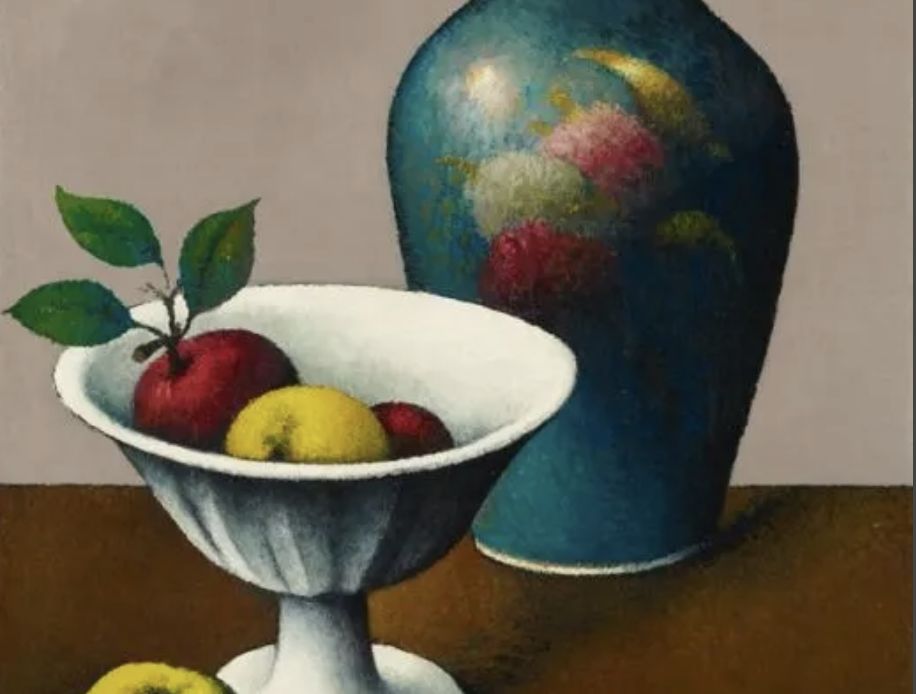
Focus sur le tableau Paysage basque, Tobeen, 1911
Né en 1880 à Bordeaux sous le nom de Félix Bonnet, Tobeen est un artiste dont le parcours épouse les courants majeurs de l'art du début du XXe siècle, tout en conservant une singularité rare.
Issu d'une famille modeste, il découvre très jeune la gravure et le dessin, ce qui le conduira à s'installer à Paris au tournant du siècle, à la recherche d'une carrière artistique.
Tobeen évolue rapidement dans l'effervescence parisienne, où il se lie avec les avant-gardes de l'époque, tout particulièrement avec les cubistes qu'il côtoie au Bateau-Lavoir.
Influencé par la rigueur géométrique du cubisme, il développe cependant une sensibilité picturale qui le distingue de ses contemporains. Tandis que Braque et Picasso s'attachaient à déconstruire la forme pour en révéler l'essence, Tobeen se montre plus lyrique dans son approche.
Ses compositions, souvent marquées par des paysages du Pays basque, regorgent de douceur et d’harmonie, où la couleur semble respirer librement, dialoguant avec les formes. Le cubisme de Tobeen n'est pas sec, ni purement analytique, mais il invite plutôt à une contemplation sereine du monde, presque poétique.
L’artiste ne se limite pas à la peinture. Il excelle également dans l’art de la gravure, et son engagement dans la modernité le conduit à expérimenter plusieurs techniques artistiques, tout en restant fidèle à son amour des motifs naturels et traditionnels.
Enraciné dans sa terre natale, il continue à puiser dans les paysages basques, leurs reliefs, leurs lumières changeantes, nourrissant son œuvre d'une profondeur narrative rarement égalée dans le cubisme.
Tobeen, bien que discret sur la scène artistique internationale, laisse derrière lui une œuvre riche et personnelle. Sa vision singulière, subtilement mêlée aux grandes tendances de son temps, confère à son art une intemporalité précieuse.
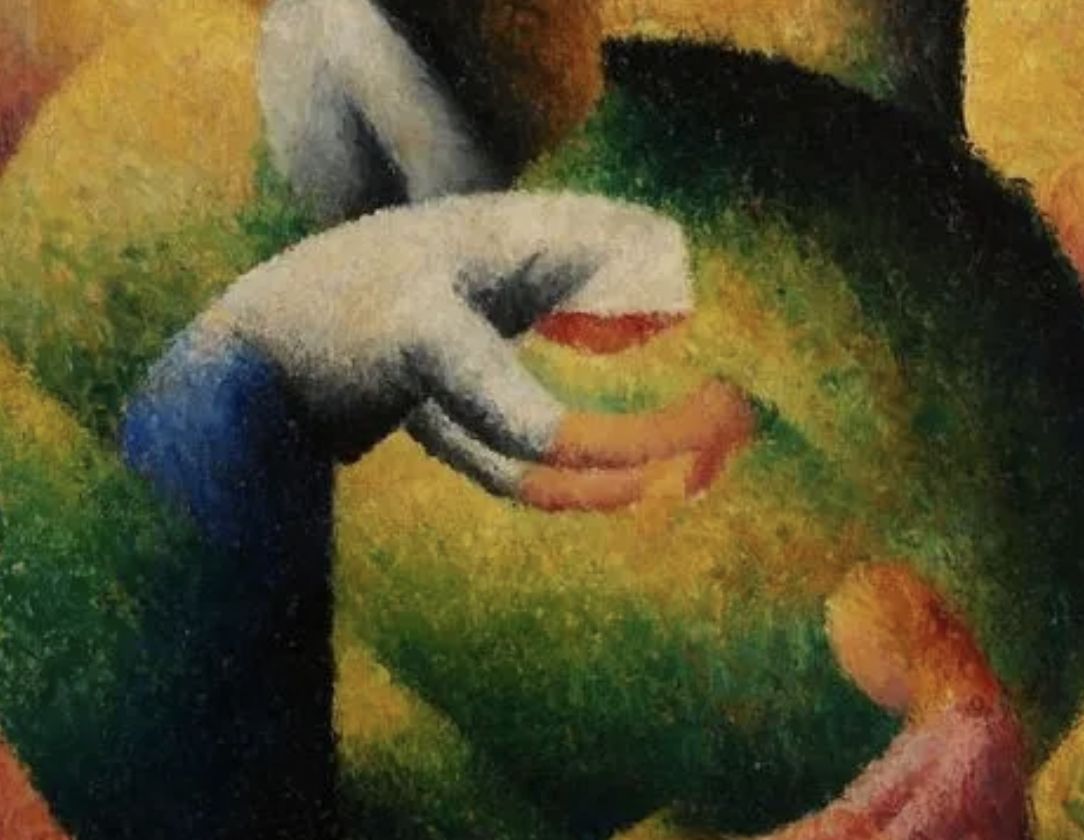
Tobeen et le cubisme
Tobeen, de son vrai nom Félix Elie Bonnet, occupe une place singulière dans l'histoire de l'art, en particulier au sein du mouvement cubiste, qu’il a su interpréter avec une sensibilité propre.
Né en 1880 à Bordeaux, Tobeen est souvent associé à l'École de Paris, où il développe son approche du cubisme, sans toutefois s’enfermer dans les règles strictes de ce mouvement.
Alors que les figures majeures du cubisme, telles que Picasso et Braque, déconstruisent les formes en une fragmentation géométrique rigoureuse, Tobeen se distingue par un style plus poétique et accessible, dans lequel l'abstraction ne sacrifie jamais le lien avec la réalité tangible.
Si l'on compare son travail à celui de Braque ou Picasso, on remarque immédiatement que Tobeen ne cherche pas à disloquer le sujet jusqu'à l'incompréhensible.
Là où les deux pionniers cubistes emportent leurs compositions dans une complexité presque hermétique, Tobeen préfère une simplification plus douce des formes.
Sa peinture adopte une géométrisation claire et structurée, mais elle conserve une lisibilité immédiate, donnant à ses œuvres une qualité presque narrative.
Prenons, par exemple, ses paysages du Pays basque : les maisons, les arbres, les collines ne sont pas dissous en une mosaïque de plans et d’angles, mais plutôt modelés en formes arrondies, presque sculpturales, qui invitent à la contemplation plus qu'à la déconstruction.
À ce titre, l’approche de Tobeen rappelle davantage celle de Fernand Léger, un autre artiste qui a su humaniser le cubisme. Comme Léger, Tobeen injecte dans ses compositions une chaleur et une fluidité qui contrastent avec la rigueur plus froide du cubisme analytique.
Chez Léger, cela se traduit par une monumentalité presque industrielle des formes ; chez Tobeen, c'est plutôt par une approche organique, où les éléments naturels semblent vibrer sous le pinceau, comme dans une scène paisible suspendue dans le temps.
On peut dire que Tobeen réconcilie le cubisme avec une vision plus romantique du paysage, une vision où la nature conserve son pouvoir évocateur malgré la réduction géométrique des formes.
Dans cette recherche d’équilibre entre modernité et tradition, Tobeen peut aussi être comparé à un autre peintre basque, Jean-Emile Laboureur. Tous deux ancrent leur cubisme dans un terroir, dans des scènes de vie et de paysages qui résonnent avec une certaine simplicité rurale.
Mais là où Laboureur tend vers un minimalisme graphique presque linéaire, Tobeen préfère des compositions plus charnelles, où la courbe et la couleur occupent une place prépondérante. C'est cette tension entre abstraction et sensualité qui fait la singularité de Tobeen dans le contexte du cubisme.
Par ailleurs, la palette de Tobeen diffère également de celle de ses contemporains. Là où les cubistes se plaisent à exploiter des teintes sobres, souvent dominées par les gris, les ocres et les bruns, Tobeen adopte des couleurs plus vives et contrastées, tout en restant dans une harmonie douce et équilibrée.
Ses verts et ses rouges, bien que stylisés, conservent une qualité terrestre qui renforce l’ancrage de ses sujets dans une réalité identifiable. C’est un cubisme aux accents paysagers, où l’abstraction n’efface jamais complètement la reconnaissance immédiate du motif.
En définitive, Tobeen se positionne comme un cubiste singulier, à la croisée de plusieurs influences. Là où Picasso et Braque poussent l’abstraction jusqu’à ses limites, il se sert du langage cubiste pour célébrer le quotidien, le paysage et la nature.
Cette approche fait écho à un besoin de réconciliation entre l’avant-garde et une tradition picturale plus enracinée dans la représentation directe du monde. Tobeen est, en ce sens, un précurseur d’un cubisme humanisé, un artiste qui parvient à trouver un équilibre délicat entre modernité formelle et évocation poétique.
Dans ses œuvres, la nature se structure en formes épurées sans perdre sa dimension émotionnelle, faisant de lui une figure à part dans le panorama du cubisme européen.
L’empreinte de Tobeen sur son époque
Tobeen est un peintre peu connu du grand public aujourd’hui, mais qui occupe cependant une place de choix sur le marché de l’art.
Ses œuvres sont prisées par les collectionneurs, qui jouent le plus grand rôle dans la préservation de son œuvre même si certaines sont conservées dans des musées et ouvertes au public.
Sa signature
Les œuvres de Tobeen ne sont pas toutes signées.
Même s’il y existe des variantes, voici un premier exemple de sa signature :
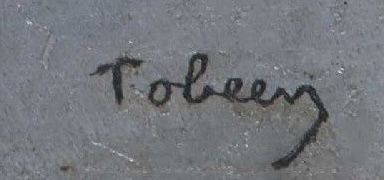
Expertiser votre bien
Si vous êtes propriétaire d'une œuvre de Tobeen n'hésitez pas à solliciter une évaluation gratuite en remplissant notre formulaire en ligne.
Un membre de notre équipe, composée d'experts et de commissaires-priseurs agréés, vous contactera pour vous fournir une estimation de la valeur marchande de votre œuvre.
Si vous envisagez de vendre votre œuvre, nos spécialistes vous guideront également à travers les différentes alternatives disponibles pour obtenir le meilleur prix possible, en tenant compte des tendances du marché et des spécificités de chaque œuvre.
Réponse en - de 24h
A découvrir dans la même thématique
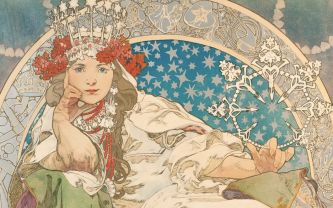
Cote et valeur des oeuvres, affiches, peintures de Alphonse...
Alphonse Mucha est un artiste majeur de l'Art Nouveau. Il a produit beaucoup d'oeuvres qui sont cotées et très appréciées aux enchères.
En savoir plus >
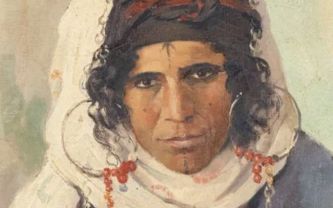
Cote et valeur 2024 des tableaux, dessins, peintures de Max...
Max Moreau est un peintre orientaliste du XXème siècle qui a produit des tableaux dont la cote et la valeur sont élevées sur le marché des enchères.
En savoir plus >
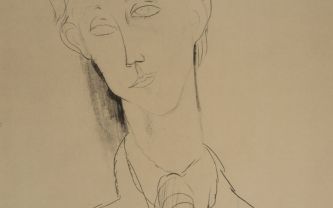
Cote et valeur des dessins d'Amedeo Modigliani
Amedeo Modigliani est un artiste de l'avant-garde parisienne qui a produit des dessins dont la cote et la valeur sont extrêmement élevées aux enchères
En savoir plus >
Site sécurisé, anonymat conservé
Commissaire-priseur et expert agréé par l'État
Estimations gratuites et certifiées
